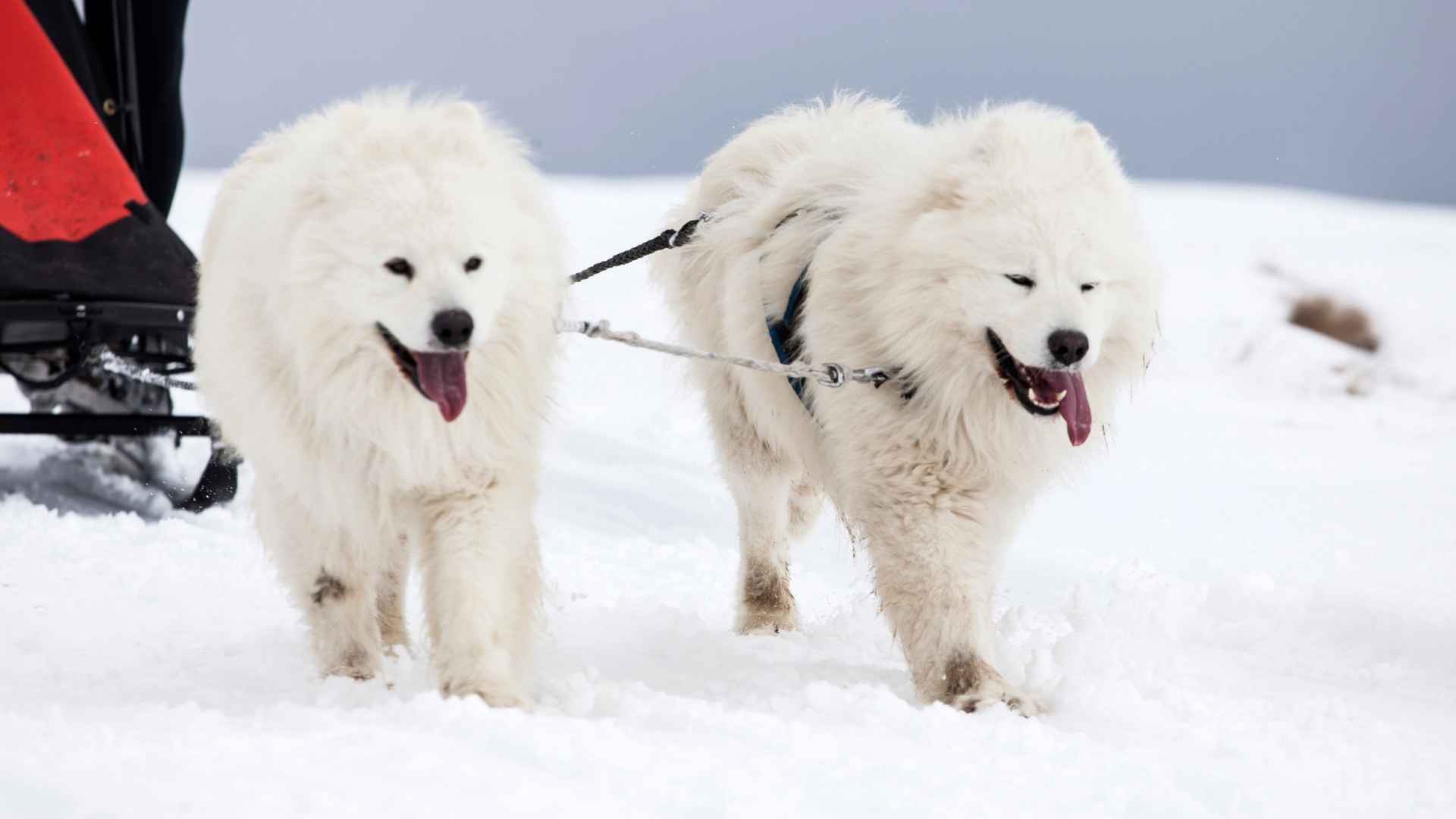Imagine a land where the sun barely rises, the air bites your face, and survival depends on teamwork, endurance, and sheer willpower. Now imagine the heroes of that world aren’t people, but dogs. Welcome to the frozen north, where sled dog breeds reign supreme.
Sled dogs are believed to have originated in Mongolia between 35,000 and 30,000 years ago. Researchers suggest that humans brought these dogs with them as they moved north of the Arctic Circle around 25,000 years ago. While sled dogs are still relied upon for transport in some remote areas of Alaska, Canada, and Greenland, their primary role today is in the sport of mushing.
These aren’t your typical lap dogs. They’re built for power, cold, and epic journeys across unforgiving landscapes. From the legendary Siberian Husky to the mighty Alaskan Malamute, these dogs are more than just pretty fluff—they’re the engine that powered entire civilizations in the Arctic.
But even if you don’t plan on leading a dogsled expedition, there’s something undeniably fascinating (and inspiring) about these breeds. Their loyalty, intelligence, and work ethic make them legends, not just in snow-covered towns, but in households around the world.
So, whether you’re here to admire their history or wondering if one of these snow-loving companions could join your pack, let’s explore the sled dogs of the Arctic and what makes them such enduring icons of strength.
Arctic Sled Dog Breeds
1. Alaskan Husky
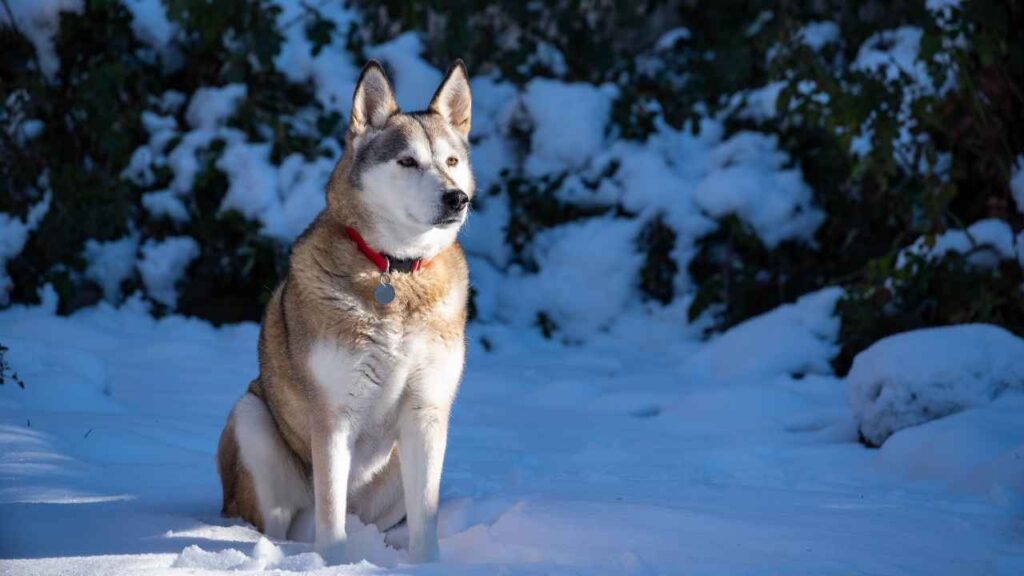
The Alaskan Husky is basically the sleek race car of the sled dog world — built for speed, stamina, and the thrill of the chase.
Originally sharing roots with the Siberian Husky and the Alaskan Malamute, these pups have been “customized” over the past century by crossing with speedy breeds like English Pointers, Greyhounds, and German Shepherds. The result? A super-athlete sled dog with one goal: to win the race.
They aren’t here to win any beauty contests. They’re more about function than fashion — think less “Instagram model,” more “Olympic athlete.” Their looks can vary widely, but their heart? Pure sled dog gold.
If you want a dog that’s all about teamwork, endurance, and racing across frozen tundras at lightning speed, the Alaskan is your go-to. Just don’t expect them to sit still for long — these dogs live life in the fast lane (or on the fast snow trail).
Fun fact: Some mushers joke that Alaskan Huskies have “rocket engines” instead of hearts. They sure don’t run on regular dog food alone!
2. Alaskan Malamute
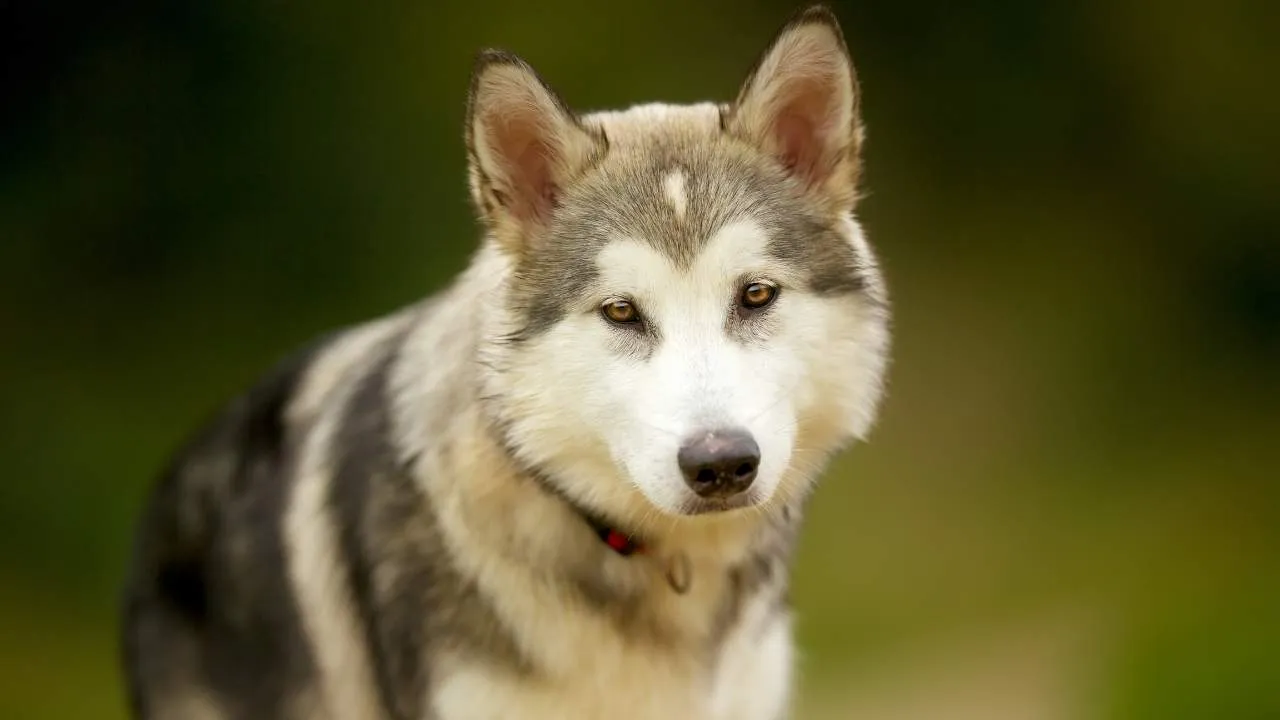
If the Alaskan Husky is the speedster, the Alaskan Malamute is the powerhouse — a big, muscular, and incredibly strong dog that’s basically a freight train with fur. One of the oldest Arctic sled dog breeds, Malamutes were bred to haul heavy loads over long distances, making them the original heavy lifters of the frozen north.
They bear a strong resemblance to other Arctic breeds like the Samoyed, Siberian Husky, and Eskimo Dog. However, it can be distinguished by its typical coloration—primarily light gray with solid white markings on the underbody, legs, feet, and parts of the face. Some Malamutes also come in other shades, ranging from sable to red and gray, often accented with black shadings.
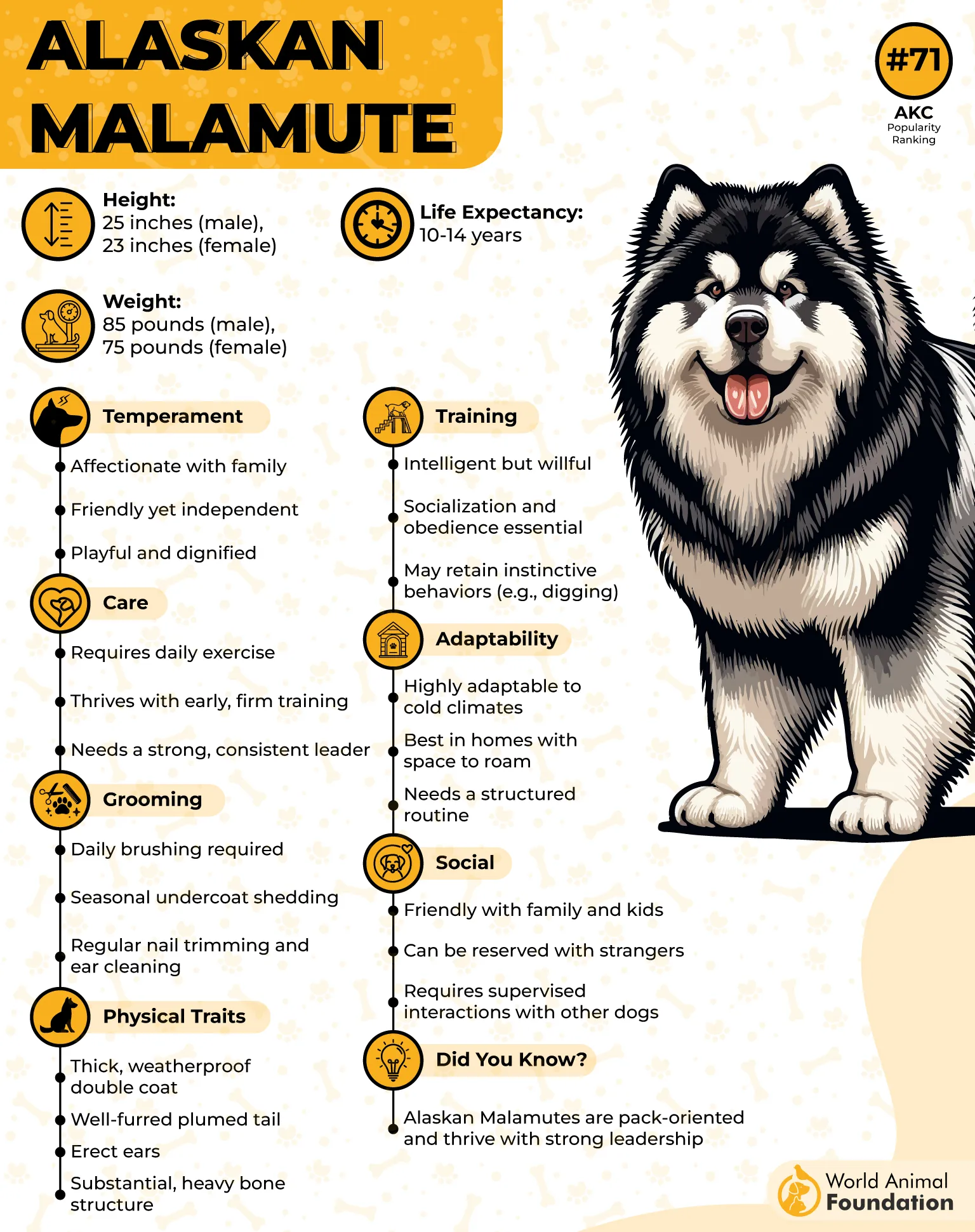
These dogs aren’t about sprinting; they’re about steady, relentless strength. On the ice, Malamutes earned legendary respect for their ability to pull massive sleds and keep going when the going got tough. Plus, they’ve got a heart as big as their paws, making them loyal and affectionate family companions.
According to the American Kennel Club (AKC), they are natural pack animals, and within your household “pack,” you must firmly establish yourself as the leader. If a Malamute doesn’t recognize and respect your authority, it will try to take charge, essentially becoming the one in control rather than the obedient companion.
Heads up: Malamutes don’t just walk into your home — they own it, often with an enthusiastic tail wag that can rearrange your furniture. And if you want to see true “puppy eyes,” look no further.
Fun fact: Malamutes were named after the Mahlemut tribe of Alaska, who relied on these dogs to survive some seriously harsh winters. Basically, these dogs are Arctic survival experts with a side of fluffy charm.
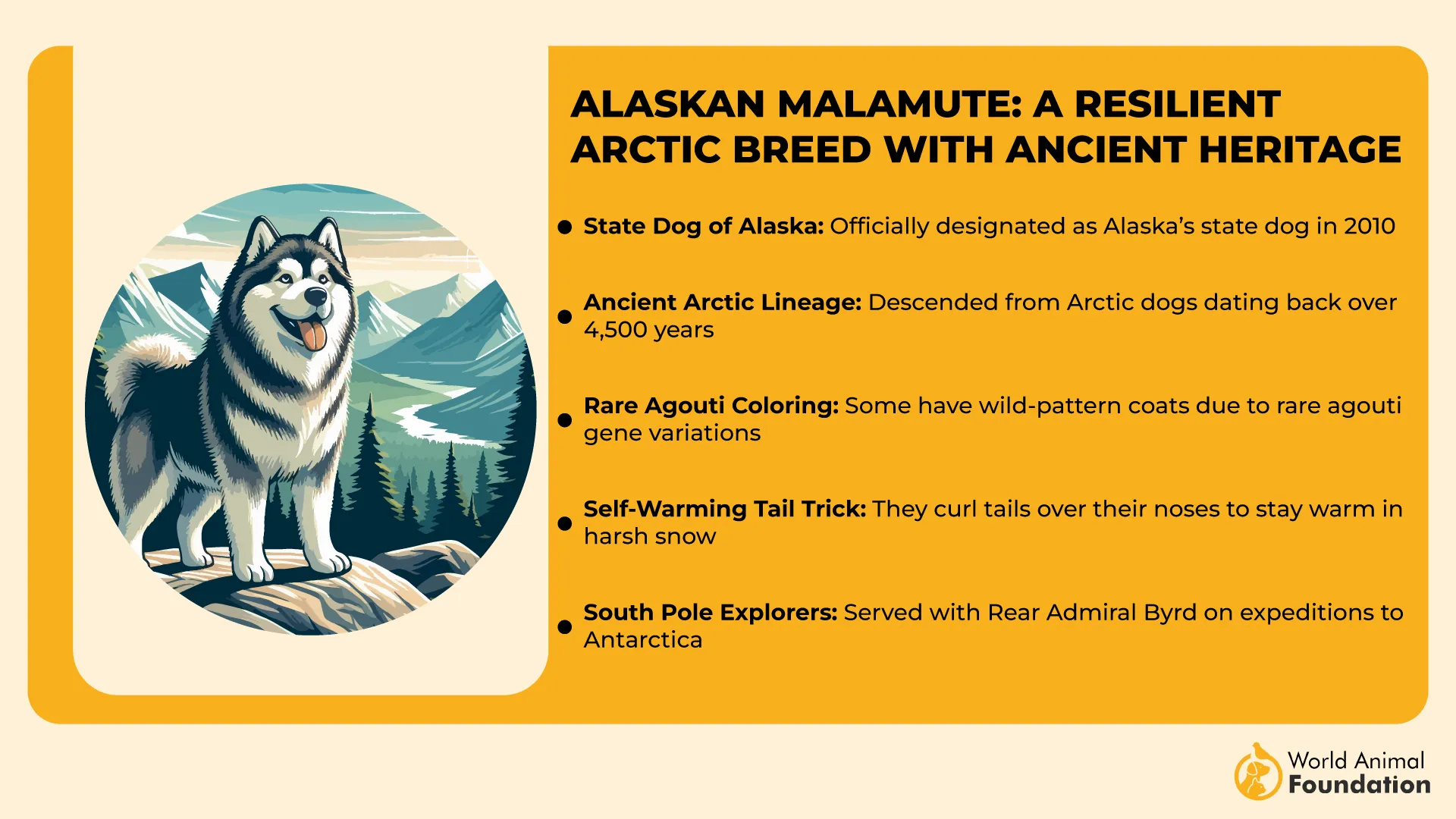
3. Chinook
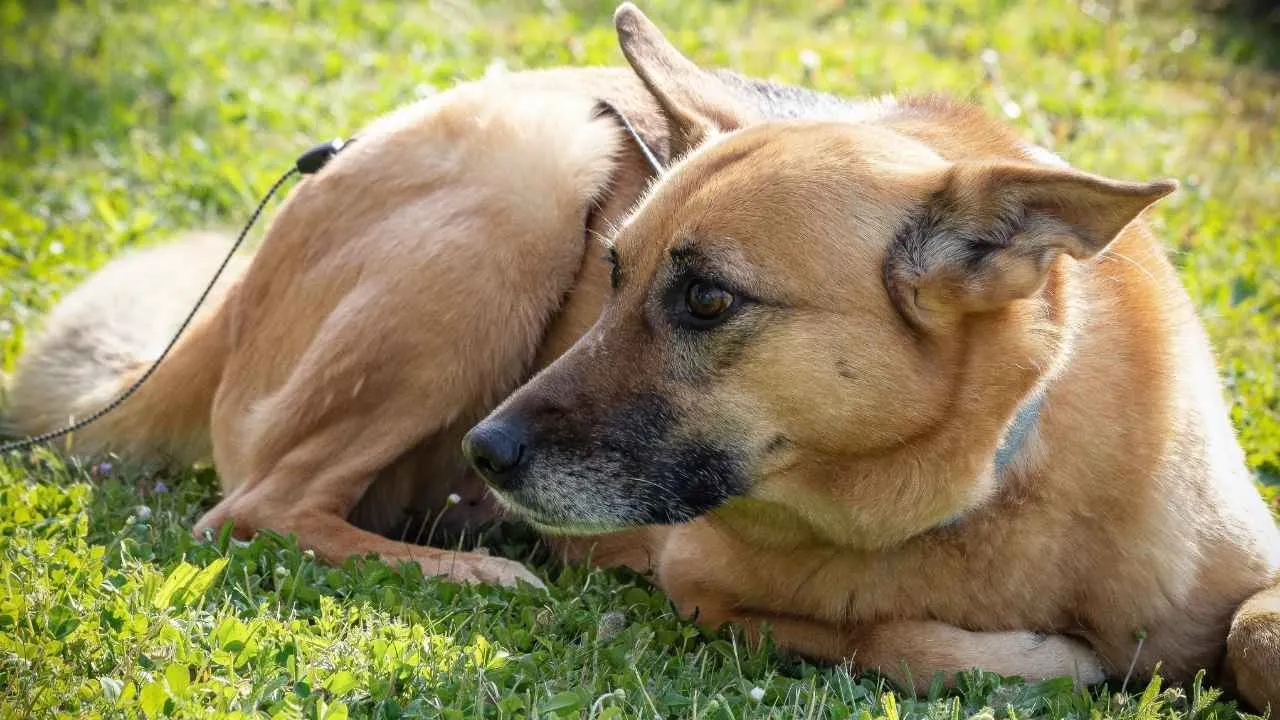
Say hello to the Chinook — the rare, cool kid of the sled dog world who wasn’t born in the Arctic but definitely earned their place pulling sleds with style.
Developed in New Hampshire back in the early 1900s, the Chinook is basically the ultimate mixed breed mashup: part English Mastiff, part Greenland Dog, a sprinkle of German Shepherd, and a pinch of Belgian Shepherd. Talk about a canine cocktail!

Chinooks are recognized for their strong, muscular build, webbed paws, and distinctive saber-shaped tails—features that made them exceptional sled dogs. They typically stand between 22 and 26 inches tall at the shoulder and weigh anywhere from 50 to 90 pounds.
This blend gives the Chinook a unique personality — big, strong, and hardworking like their Greenland Dog ancestors, but also intelligent and trainable thanks to their shepherd heritage. Plus, they’ve got a gentle, family-friendly side that makes them perfect companions when the sled isn’t rolling.
Their coat sheds seasonally, so regular grooming is needed—weekly brushing suffices most of the year, but during heavy shedding seasons in spring and fall, brushing should be increased to twice weekly.
What’s super cool? Chinooks were created to be reliable, steady, and tough enough for the cold — but also sweet enough to steal your heart (and maybe your spot on the couch). They don’t just pull sleds, they pull you into their circle of affection.
Fun fact: Because they’re so rare, meeting a Chinook is like spotting a unicorn in the snow. If you see one, give it a friendly wave — you’re in the presence of sled dog royalty.
4. Greenland Dog
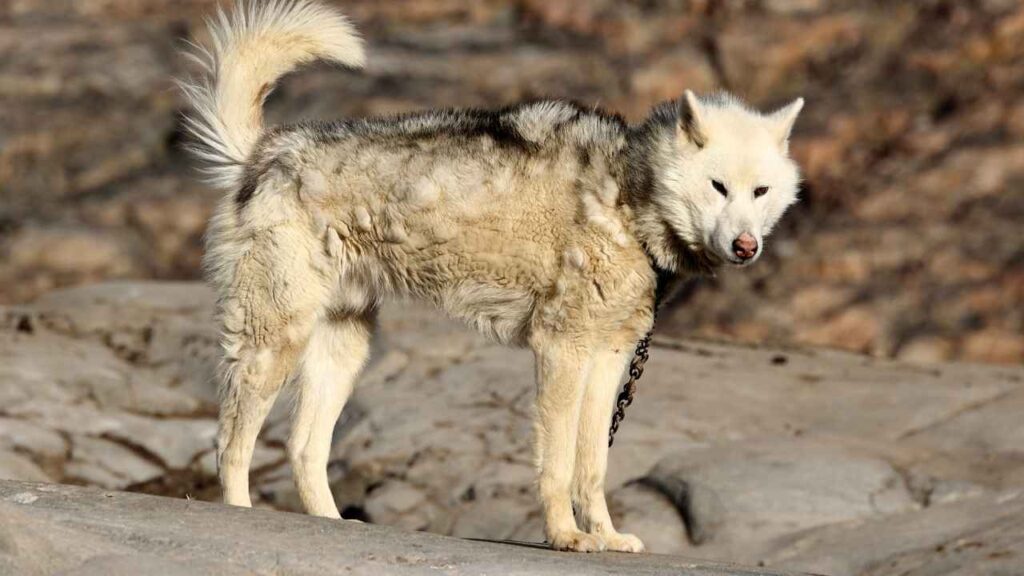
Meet the Greenland Dog — the Viking of sled dogs. If you want a dog that says, “I don’t have time for fluff, just get me to the finish line,” this is your Arctic beast.
With roots that go way back (think thousands of years), these racing sled dogs have been hauling sleds across icy Greenland terrains like it’s no big deal — because for them, it’s just another day in the freezer.
They’re strong, sturdy, and have a thick double coat that laughs in the face of frostbite. But don’t mistake their no-nonsense attitude for coldness. These dogs are loyal to their humans and have a playful side that might just surprise you, especially if you’re the one throwing the ball.
As with many sled dog breeds, Greenland Dogs are built to handle tough, challenging terrain with speed and agility. Known for their impressive physical strength and endurance, they are prized as hardworking, resilient dogs with a bold, tireless spirit, according to Wikipedia.
They are known for a stubborn streak that says, “I’m leading this sled, thank you very much.” They’re the kind of dogs that’d show up to a snowball fight wearing a Viking helmet — fierce, ready, and maybe a little bit cheeky.
Fun tidbit: These dogs are such efficient sledders that Inuit hunters often trusted them more than their snowmobiles — and that’s saying something!
5. Siberian Husky
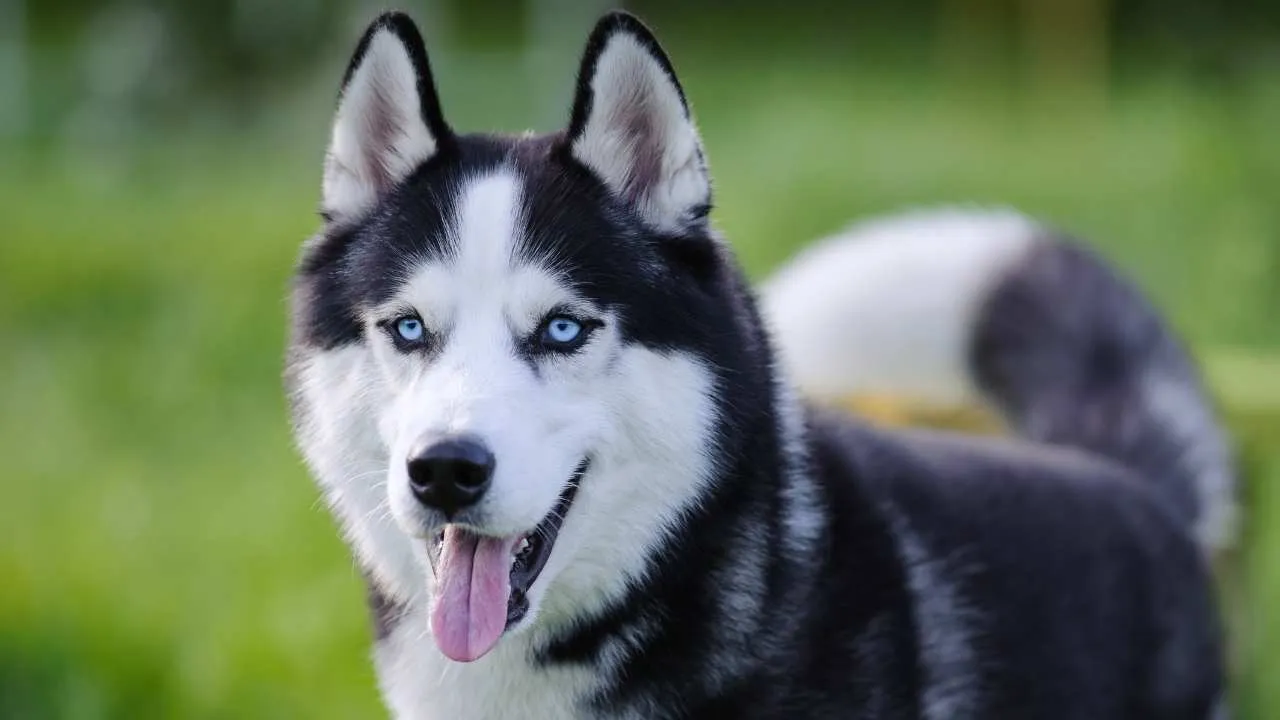
Ah, the Siberian Husky — the rockstar of sled dogs and probably the only breed that’s earned the nickname “the Houdini of the dog world.” These guys are famous for their striking blue eyes (or sometimes mismatched eyes) and their stunning wolf-like appearance that screams “wild beauty.”
Originally bred by the Chukchi people of Siberia, Huskies were designed to be fast, tough, and cooperative team players.
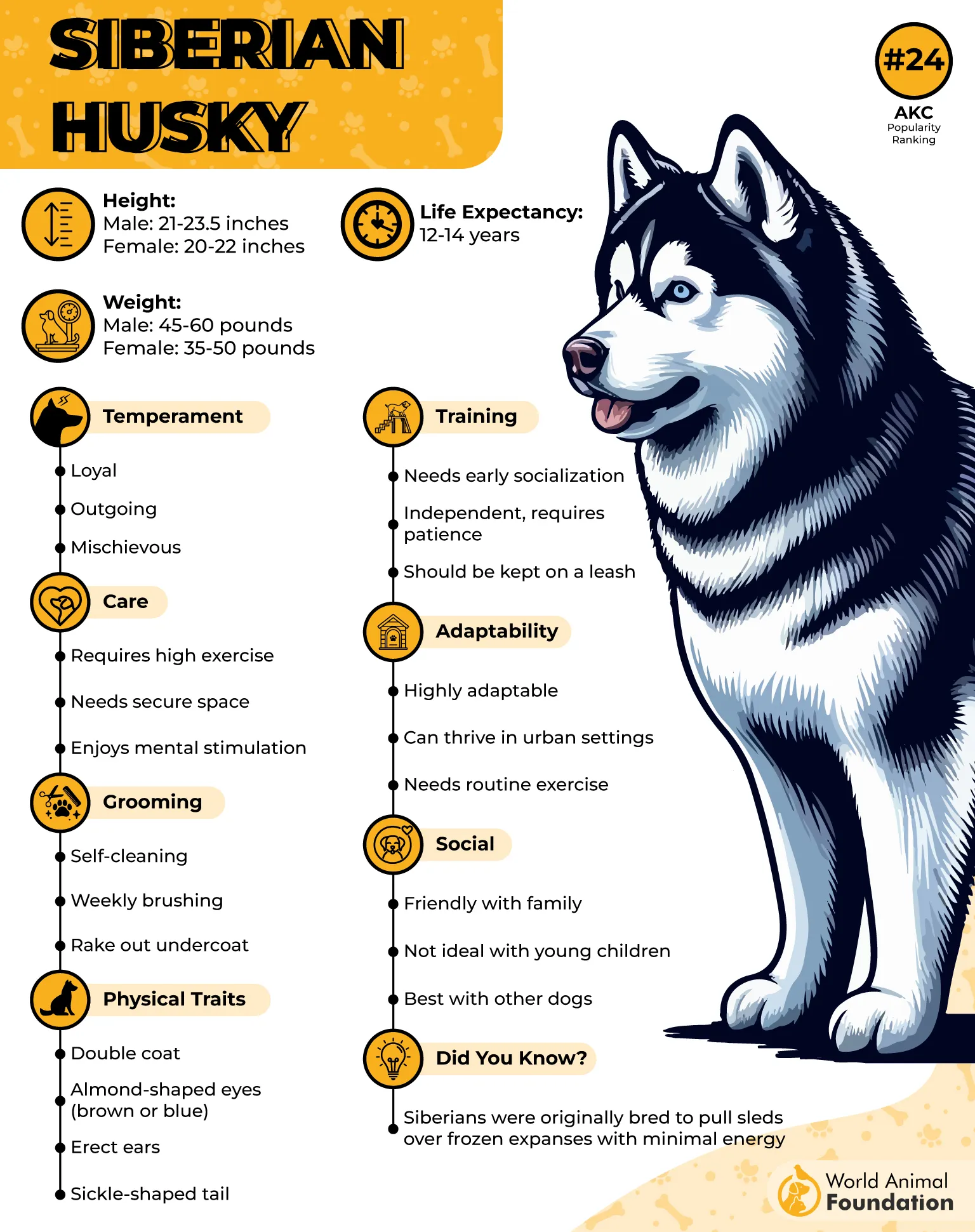
They’re friendly, social, and love people — but their energy levels? Off the charts. You’d better be ready to run, play, and maybe even learn some Siberian dog tricks if you want to keep up.
But be warned — they come with a personality that’s part athlete, part prankster. If you think you can keep a Siberian Husky contained in your yard without it plotting a daring escape, think again. These pups have Olympic-level skills in fence-jumping, gate-opening, and generally outsmarting humans.
According to Britannica, Siberian Huskies are notorious for causing damage around the house if they don’t get enough exercise or are left alone for extended periods. Young Huskies, in particular, are prone to destructive behavior and should be kept in a safe, damage-proof space when unsupervised.
True to its background in long-distance sled racing, the Siberian Husky is a high-energy breed that requires a minimum of one to two hours of exercise each day. Known for being escape artists, these sprint dogs are highly resourceful when it comes to finding a way out, so a securely enclosed yard is essential to keep them safe.
Fun fact: Huskies actually “talk” — they don’t just bark, they howl, yip, and “sing” to communicate. So if your dog sounds like it’s hosting a late-night Arctic concert, don’t worry, that’s just their jam.
6. Samoyed
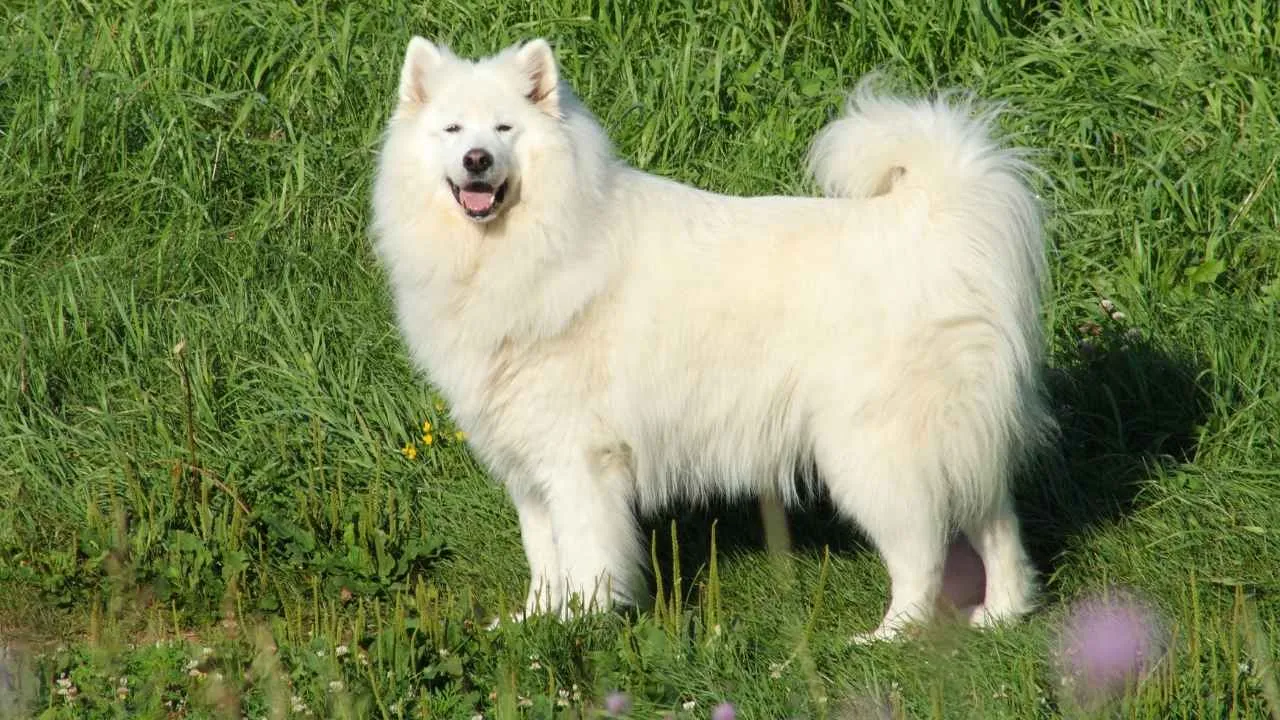
The Samoyed, aka the “smiling fluffball,” is basically the Santa Claus of sled dogs. With a coat so white and thick, they look like walking, wagging clouds fresh from a snowstorm. But don’t be fooled by their soft, plush exterior — these pups are seriously hardworking Arctic athletes.
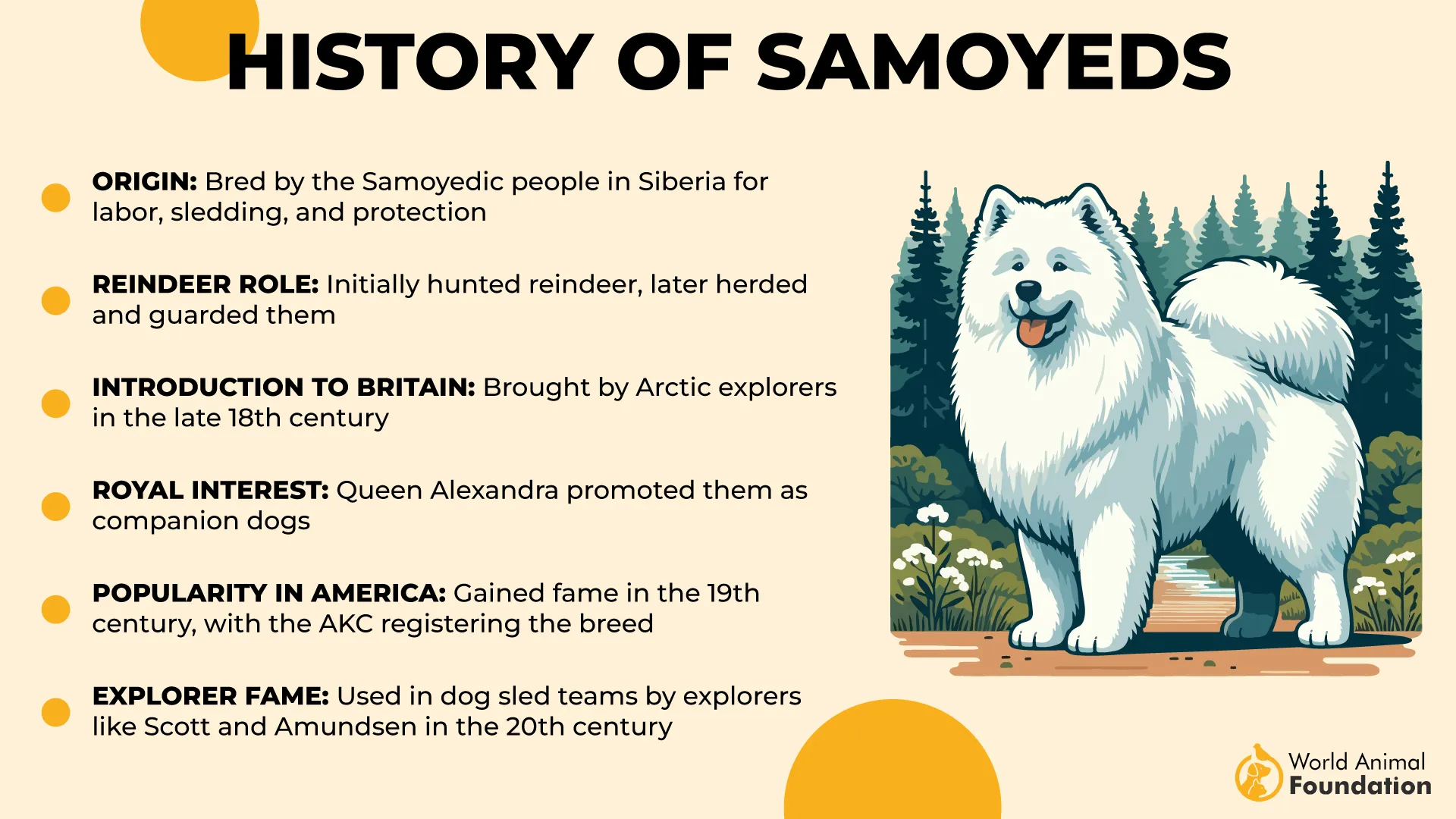
Originally bred by the Samoyede people of Siberia, these dogs pulled sleds, herded reindeer, and did all the heavy lifting while looking effortlessly adorable.
These medium- to large-sized sled dogs weigh between 35 and 65 pounds and stand confidently at a height of 19 to 23.5 inches. And yes, their signature “Sammy smile” isn’t just for show — it helps keep their mouths from freezing shut in sub-zero temps. Clever, right?
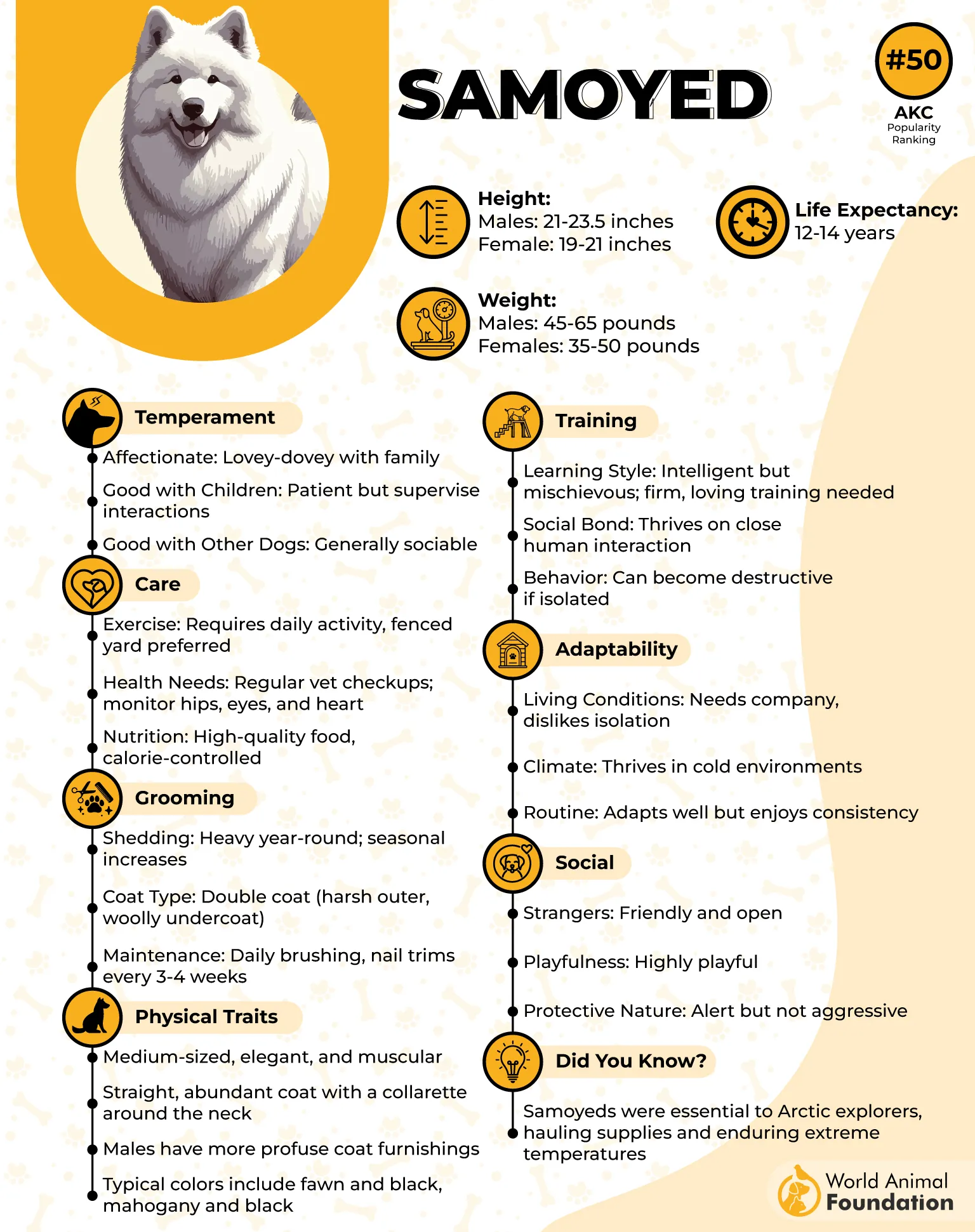
Due to their northern heritage, Samoyeds possess a dense double coat, featuring a long, straight outer layer and a soft, thick undercoat, to protect them from harsh climates.
If you’re lucky enough to meet a Samoyed, expect a bundle of energy, friendliness, and a stubborn streak that says, “I’m cute, so I do what I want.”
Plus, they’re known to be great family dogs, ready to cuddle up after a long day of sledding — or just after convincing you to throw their favorite toy one more time.
Fun fact: Samoyeds shed enough fur to knit you a matching sweater… twice. So, if you want a dog and a full winter wardrobe, you’re set!
7. Canadian Eskimo Dog
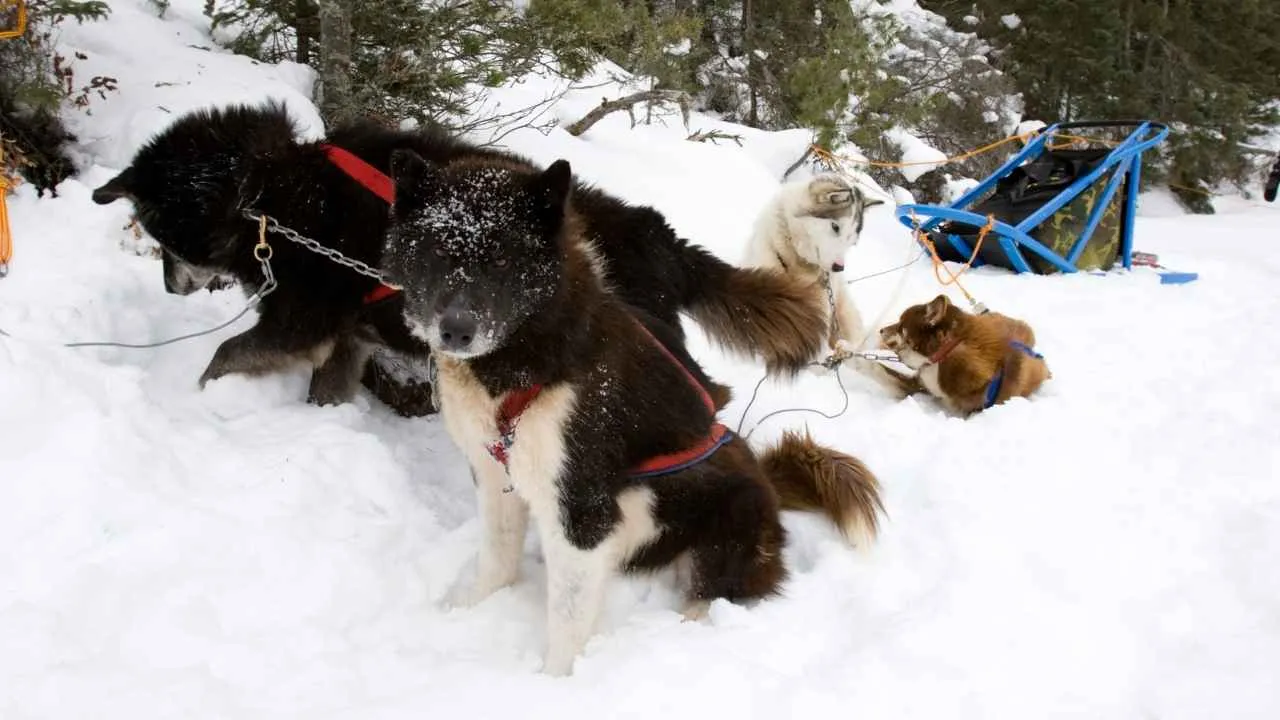
Next up is the Canadian Eskimo Dog, also called the Canadian Inuit Dog, a true legend of the North with a history as rich as the snowy tundra it calls home. The Canadian Eskimo Dog is currently at risk of extinction, with a 2008 estimate indicating only around 300 purebred individuals remaining.
This breed exhibits a strong, athletic, and impressive appearance, built more for endurance and hard labor than for speed. Like other spitz-type dogs, it features erect, triangular ears and a thickly furred tail that curls over its back.
These guys are the OG sled dogs of the Canadian Arctic — tough, resilient, and built to haul heavy loads across frozen wastelands with the kind of quiet determination that would make even a polar bear pause in respect.
They’ve been companions to Inuit hunters for centuries, helping with everything from transportation to hunting expeditions. If the Arctic were a workplace, the Canadian Eskimo Dog would be the employee of the month… every month.
Unlike the flashy Samoyed, the Canadian Eskimo Dog keeps things low-key — more “strong and silent type.” But don’t mistake their stoic vibe for a lack of personality. These dogs are fiercely loyal, incredibly intelligent, and have a working ethic that would make your 9-to-5 look like a stroll in the park.
Canadian Eskimo Dogs require an exceptionally high level of physical activity. It’s not well-suited to the average pet owner’s lifestyle; without significant changes to accommodate its needs, the dog can become noisy, destructive, and miserable, says Purina.
A simple walk won’t cut it—they need intense, demanding exercise that goes beyond what most dog owners can typically provide. Their strong drive for work and mental stimulation makes them ideal candidates for dog sports like carting, mushing, and skijoring.
Pro tip: If you ever want to impress one of these pups, just don’t call them “Eskimo” in a casual way — they appreciate their history and heritage, just like a true northern aristocrat.
Conclusion
Arctic sled dog breeds have been selectively bred for generations to survive harsh arctic conditions and thrive in mushing events, from long adventure trips to sled dog racing. Other famous sled dogs like the Mackenzie River Husky, Sakhalin Husky, and Esquimaux Dog are rare breeds today but were once vital during efforts like World War II and building the Alaska Highway.
Each working sled dog in a dog team—from lead dog to freight dogs—was chosen for traits like tough feet, a thick coat with a waterproof inner coat, and an outer coat keeping snow at bay. Their very efficient gait, ability to pull heavy loads, and resistance to warm weather made them ideal in polar terrain.
Though no longer the only dogs for transport, they’re still the most commonly used dogs in sports and tourism. Unlike picky dogs or overly aggressive breeds, most sled dogs must work with other dogs, tolerate harsh conditions, and maintain focus. Whether purebred dogs or aboriginal sled dogs, these domesticated breeds continue to serve as loyal, powerful, and enduring icons of the frozen north.


